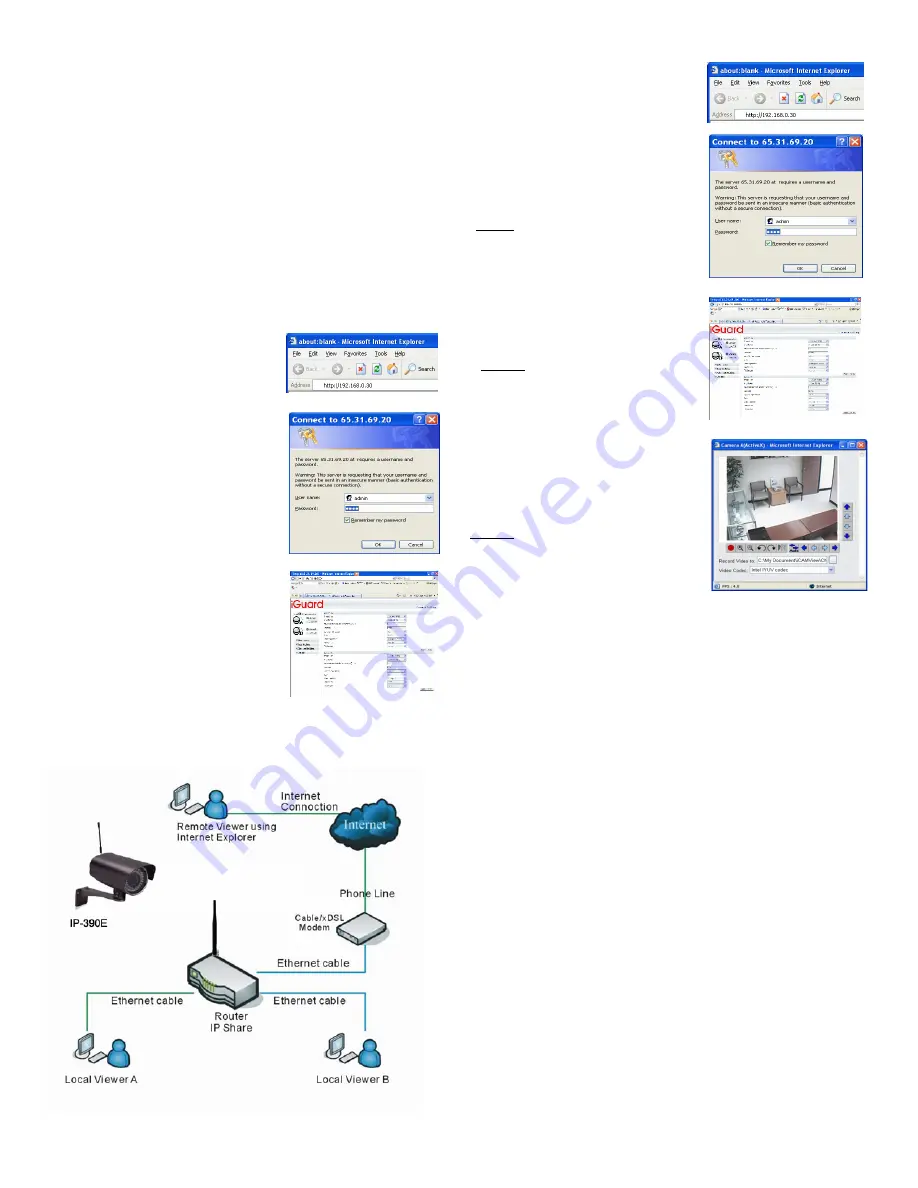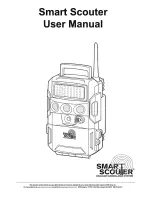
5.
If the camera is connected to a router with DHCP
enabled, an IP will be assigned and displayed next to
the camera automatically.
6.
If there is no DHCP on the network, then the camera
has to be manually assigned with an IP address* by
clicking on the
“
IP Configuration
”
button.
7.
You can change the WEB Manger
’
s programming
(TCP) port and video streaming (UDP) port under the
Advanced tag to suit your specific lan requirement
F. Local Monitoring (behind the router) .....................................
1.
Launch IE or any Java Enabled Browser;
enter the IP address that is assigned to
the IP-390E in Step. E
2
. Enter your User Name and Password* to
login.
The default user ID and Password is not
defined. Press
“
Enter
”
twice or click on
“
Apply
”
to login
E. Network Configuration (Wired/Wireless)................................
1.
You can access the camera
’
s web
manager by double click on the IP
displayed in iGuard Utility or just lick
on the
“
Launch iGuard
”
button.
2.
Enter your User Name and
Password* to login.
Note: The default user ID and Password
is not defined. Press
“
Enter
”
twice or click
on
“
Apply
”
to login
3.
You can configure the wired network
property by click on
“
Basic
Setting
”
/
”
Network Setting
”
4.
You can configure the wireless
network by click on
“
Basic
Setting
”
/
”
Wireless Setting
”
Note: The wireless network will take
priority over wired network ie. The IP
assigned by the wireless router will
become the default IP for the web
manger once the camera is
successfully associated with a
wireless network.
3.
Click on
‘
ActiveX
’
or
‘
Sun Java
’
on
Camera A or B to view the video,
based on the browser on your PC
4. Click on the Red round button to
record images to the destination
specified in the path.
G. Remote Monitoring (From Internet) ................................
1. If you have a Static Public IP
…
Follow the same procedure in
Step G
above. All you have to do is
adjusted the TCP/IP property in the network section of iGuard
’
s web
control software to the assigned parameters.
2. If you have a Dynamic Public IP and you share your internet
connection through a router
This is a typical situation if you have a consumer grade broadband
service. There are three major issues that need to be addressed:
a. Port forwarding (Router Programming)
b. DDNS service (to keep track your IP address)
c. Firewall (to allow network traffic from remote PC to the camera)
If you are not familiar with these network terms, then you will probably
need a network technician to help to setup the iGuard. Please refer
to the user
’
s manual on the utility CD for more information.
NOTE:
* For some shipment, the user name maybe
defined as
“
admin
”
; the password is the
same as the master password which is on
the ser ia l # la bel o n the ca m er a .
* The host PC and the camera must be on the same
subnet (behind the same router) for the PC to
“
see
”
the camera..
NOTE:
You may be prompted to install an
Active-X component if this is your first
time visiting the camera click
“
OK
”
to
proceed
NOTE:
The Pan/Tilt control buttons are for the
optional second cameras that support PT
functions.




















